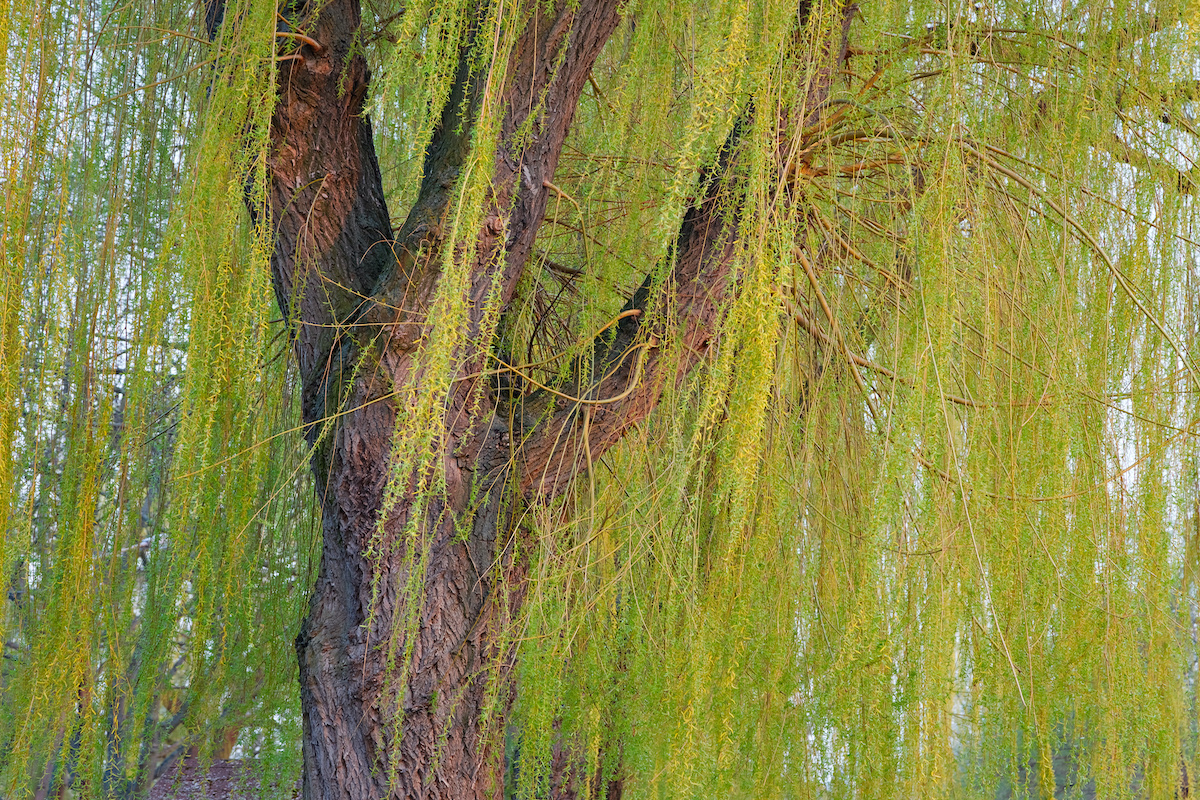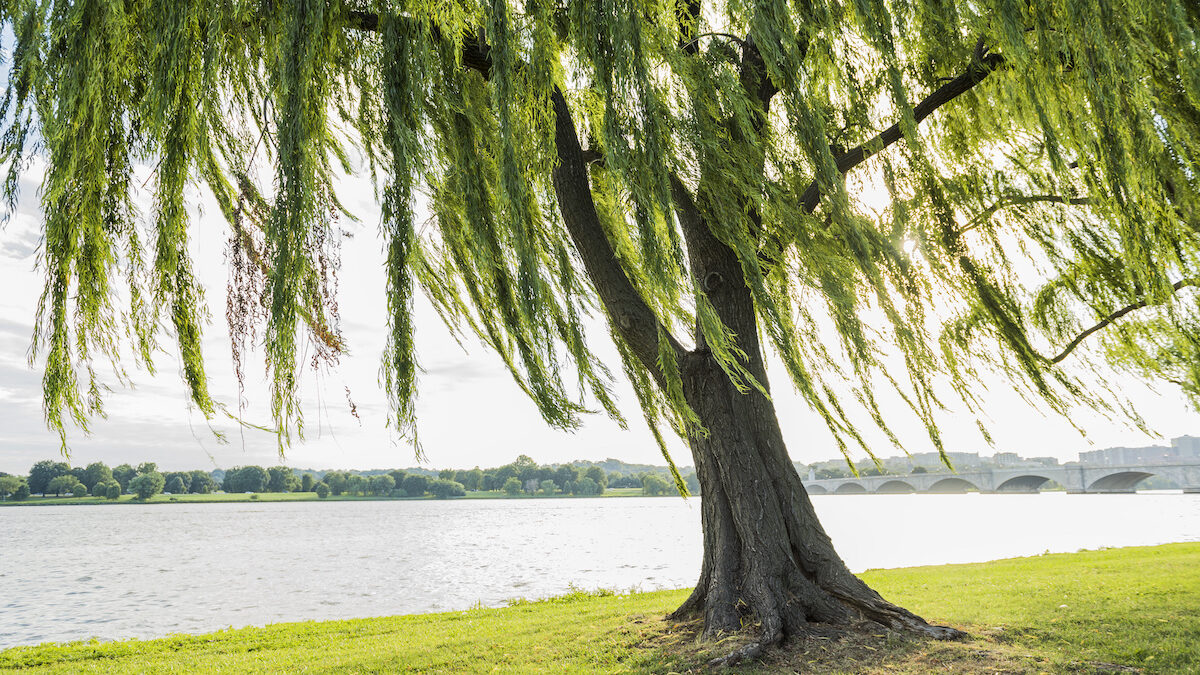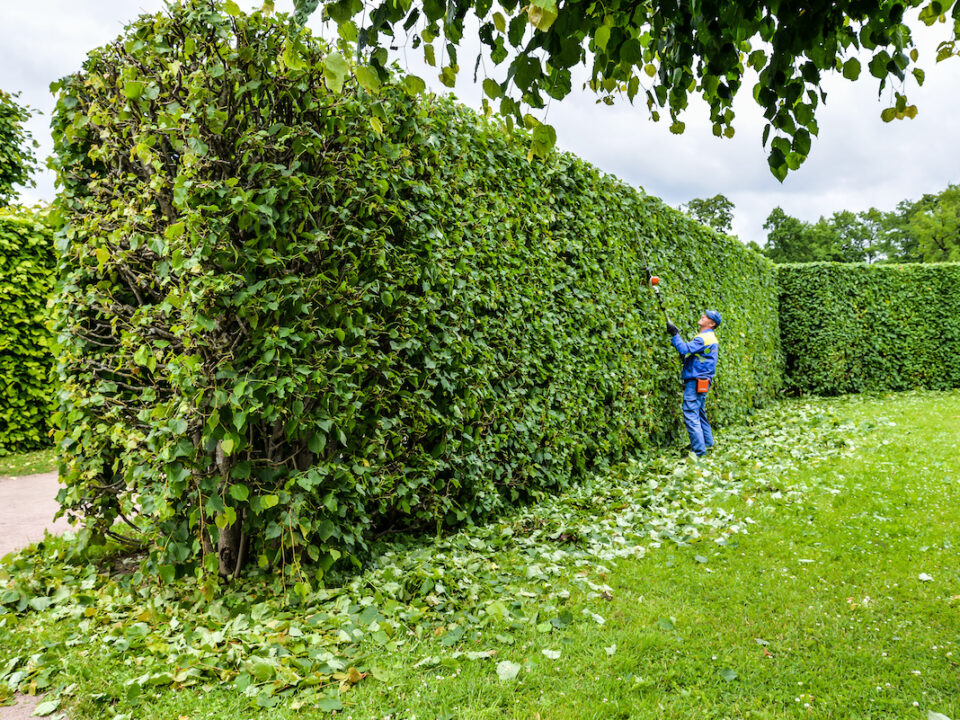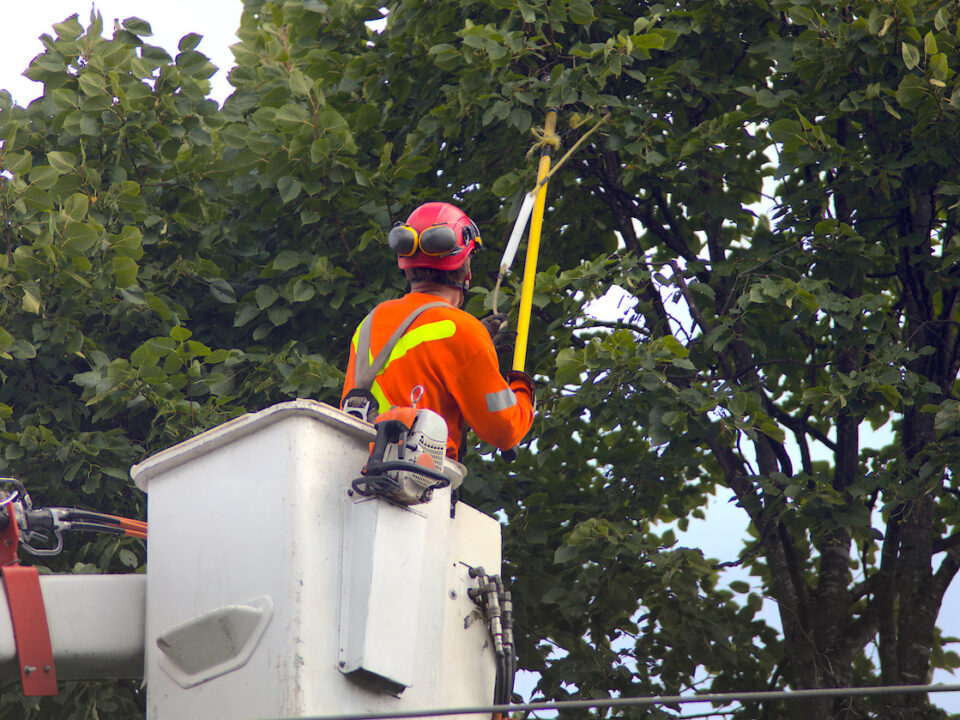Majestic and almost whimsical, weeping willow trees in Florida are a common sight in parks as well as neighborhoods throughout the state. When you see a weeping willow tree, you might be curious about its care and lifespan. Planting a weeping willow tree in your yard can bring a lot of enjoyment to your landscaping, but it’s essential to do research on this tree before planting it.
About Weeping Willow Trees in Florida
First, let’s start with the basics about the weeping willow tree. Likely originating from China, the weeping willow tree is a dioecious tree that has both male and female flowers. The branches of a weeping willow fall like a curtain around the entire tree, providing an incredible amount of shade and allure for this species.
The weeping willow tree was also used for medical purposes by the Native Americans. The tree’s bark was used to treat fever and pain, and an ingredient within their bark is found within aspirin. Native Americans also used the leaves to create paintbrushes.
Today, the weeping willow is primarily an ornamental tree. When it comes to identifying a weeping willow tree, you will notice the following characteristics:
- Orange to brownish yellow twigs that are flexible and brittle
- Small buds that are brownish red in color
- Fruit that is displayed in 1-inch long capsules that have cottony seeds
- Ashy gray bark with a slight orange tint
Growing Conditions of Weeping Willows
Weeping willow trees tend to grow in sandy soil with at least four hours of direct sunlight. It thrives in areas with moisture, which makes it common to find around ponds and lakes. They prefer standing water. These trees also have a drought tolerance and can handle high heat and humidity.
One notable aspect of weeping willows is that they grow and mature quite quickly. A fully mature weeping willow can reach up to 40 feet in height. It grows at a rate of 24 inches per year until reaching maturity. The stems will weep all the way to the ground, covering the entire trunk of the tree. Some people prefer to prune the tree back so they can walk underneath it.
Another consideration about weeping willows is their lifespan. Compared to other trees, weeping willows don’t live that long. They have an average lifespan of 30 years. These trees can shed quite a bit and their root systems are aggressive. While they thrive in moist areas, their roots can sense nutrients within the soil.
If you have a weeping willow tree on your property, congratulations on having a beautiful plant that brings shade and aesthetic value to your home!
However, owners of weeping willow trees also benefit from learning about their care. Next, we will discuss the proper maintenance of this tree species so you can enjoy it for decades to come.
How to Care for Weeping Willow Trees in Florida
First, know that this tree is prone to several diseases. The good news is that these diseases can be prevented by proper pruning, so you won’t need to worry about your weeping willow dying off before its time.
What type of diseases will affect your weeping willow? The most common diseases affecting this tree include:
Willow scab: This is a fungal disease that causes brown spore masses at the base of the leaves. They can also be black. Willow Scab will cause the leaves to shrivel up and die.
How do you fend off willow scab? Keeping the weeping willow properly pruned and applying chemical treatments will help keep the tree healthy.
Black canker: This fungal disease will cause the leaves to turn black. It can create large blacks spots on branches. The infection typically begins in spring during warm and humid weather.
How do you handle black cankers on weeping willows? Pruning 6-8 inches below the discoloration can help get rid of this fungal disease. Removing the infected wood can save a weeping willow.
Willow blight: This is when a weeping willow becomes infected with both willow scab and black canker at the same time. Pruning and preventative applications may help provide relief.
While there are diseases to worry about with weeping willows, you must also consider the impact of pests.
One of the most common culprits of pests is the Lymantria Dispar, formerly known as the gypsy moth. Aphids and borers are also a risk to these trees.
Meanwhile, deer and rabbits are attracted to young weeping willow trees in Florida. To help fend off animals wanting to eat the willow, you can put a fence around the tree.

Fertilizing Weeping Willows
Do weeping willows trees in Florida need fertilizer? Not if they are mature. As long as a mature weeping willow is rooted in good soil for this species, the use of fertilizer is not necessary.
However, know that fertilizer can help keep weeping willows looking lush. If you choose to use a fertilizer, you’ll want to find a balanced option that includes an equal amount of nitrogen, potassium, and phosphorus.
Pruning Weeping Willow Trees
It’s no secret that weeping willow trees have a tremendous amount of leaves and branches. How can you prune them to keep them looking beautiful?
First, this depends on the size and age of the tree. If it’s a young weeping willow, you can prune it so there is only a single central leader. The leader should be trained to have wide branch crotches. This helps with breakage, as the stems and branches of weeping willows can be brittle.
Since weeping willows tend to grow in the spring, it’s a good idea to prune them around February or March. You’ll want to snip back all the branches which will cause the tree to grow new branches, giving the tree a luscious appearance.
Planting a New Weeping Willow Tree
If you don’t have a weeping willow tree on your property and you decide it’s the right plant for you, consider growing one.
These tips can help you successfully plant a new weeping willow tree at your home.
First, you’ll want to plant the weeping willow further away from your home. Consider planting it on the edge of your property, someplace where you can really allow it to take that majestic shape. Otherwise, you’ll be in for a lot of pruning and maintenance if the willow is close to your house.
You’ll then want to think about the shape that you want your weeping willow to take. The weeping leaves are all the way down to the ground, making them very majestic in their growth habit and these limbs can actually end up weeping all the way down to the ground. When the tree is young, you can help it take on a rounded shape.
When you buy a weeping willow from a nursery, prepare for it to be root bound when you take it out of the pot. You’re going to have to cut at the roots pretty aggressively. When the tree goes into the ground, you’re going to end up with some thinning foliage on it because those roots will no longer be able to support the top of the tree
Once you plant the tree, go around and hold these branches together and prune. You can start by taking about 12 inches off each branch. This will help compensate for any root damage when you put it in the ground.
Propagating a Weeping Willow
Did you know that you can propagate weeping willow trees? You can do so by cutting a young branch from a healthy and mature weeping willow. Make sure that it does not have any diseases that were mentioned earlier.
With a clean, sharp knife, cut the branch with a diameter between 1 foot and 6 feet. You’ll want to do this in the late fall or early winter when the tree is dormant.
Meanwhile, you’ll want to choose a branch that is firm enough that it will not bend and break easily. Find a spot that’s at least 35 feet away from your home. Make sure that the tree is exposed to at least 4 hours of direct sunlight each day. Partial shade is preferred.
Next, the hole you dig should be at least 18 inches in diameter and as deep as the branch’s length. You’ll want to plant the tree close to a natural water source. If you have a pond in your yard, this will work perfectly.
When Do You Need Professional Pruning?
No matter if you’re planting a new weeping willow or you have an old tree on your property, eventually it will need your attention and pruning for its health. If you are unsure of how to prune a weeping willow tree, Warner Tree Service is here to help.
Pruning countless weeping willow trees over the years, we invite you to contact us for weeping willow pruning, trimming, and even removal if necessary.




